When Kiarra got an urgent call about a pup tied to a dumpster for three whole days, she was devastated and knew she needed to do something.
Arriving at the location, the rescuer was met with a dog who looked at her with sad eyes and was ready to be taken somewhere where she was wanted.
Rescue Mission
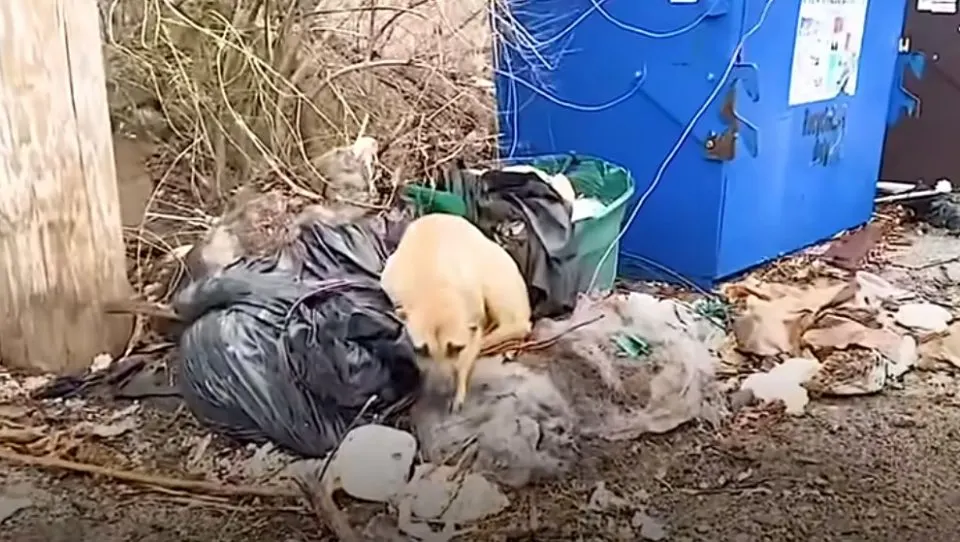
Since the pup was super friendly, Kiarra immediately got her in the car and took her to Stray Rescue Of St. Louis.
Being so sweet and kind, and being only a couple of hours at the St. Louis shelter, the hopeful pup managed to find a foster home.
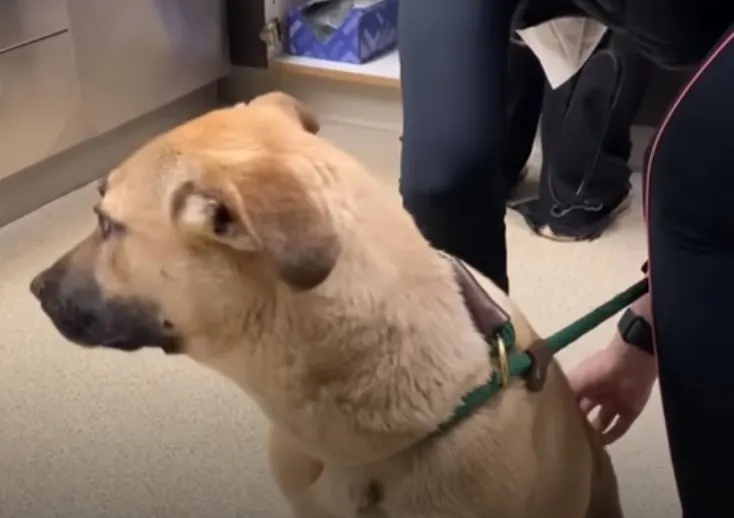
New Life
Being named Asami, the doggo got into the car and was on her way to her new life.
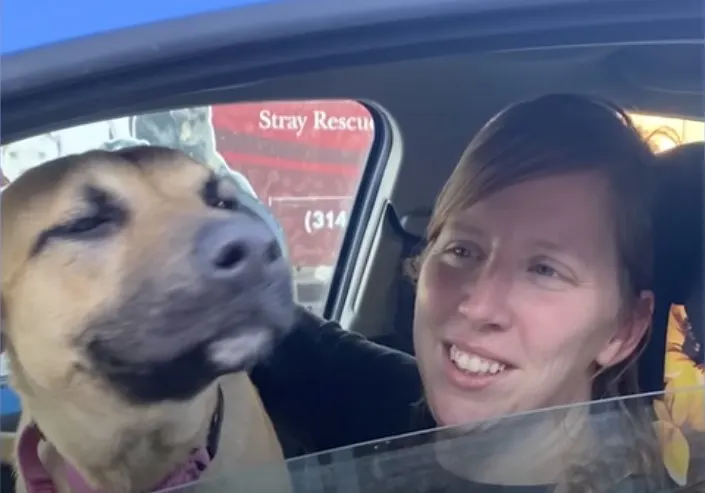
Asami settled in right away and loved spending time with her foster mom, being her little shadow and following her wherever she went.
She just has a rough time being left alone. If I close any door and we are on opposite sides, she will whine, howl and bark.
Even when she has to go do her business, Kendra has to follow Asami into the back yard and wait for her to finish.
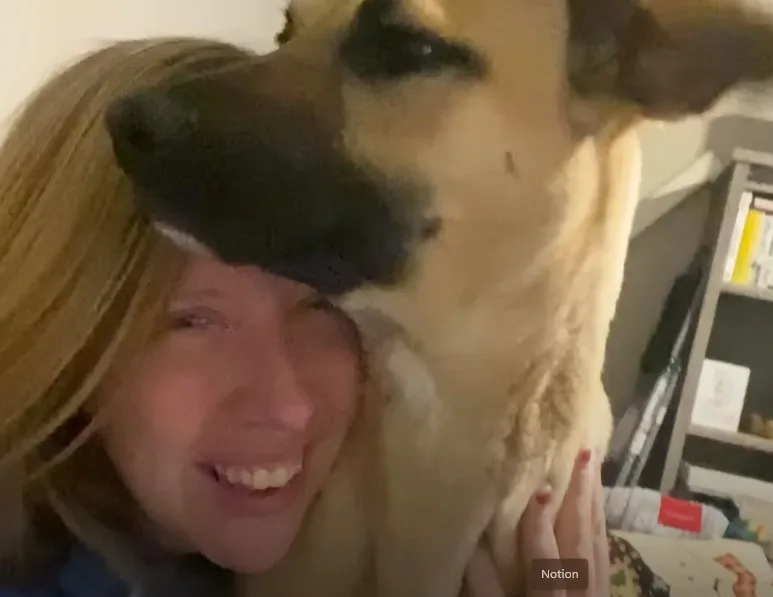
Her new favourite pastime is having fun in the snow!
She loves the snow. She loves to run and jump in the snow.
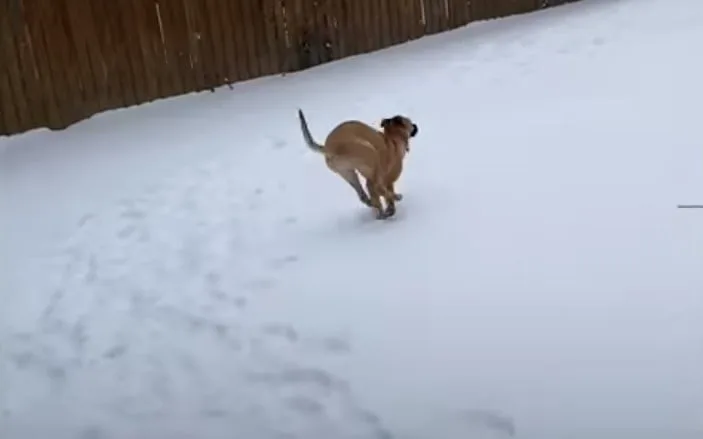
Kendra loves spending time with her in her foster home and is happy that she can give her a warm and loving environment, which will allow Asami to get used to human presence, helping her find the perfect forever home.
Unfortunately, some pups don’t have the bright and happy past life that they deserve. So, after being rescued, they really need somebody who is going to keep a close eye on them and restore their faith in hoomans.
That is where foster parents come in. Many animals need more personalized care and an environment to get back on their paws again.
Foster families can tend to animals in a more individualized way, tending to specific needs, such as medical care, behavioural training, or simply giving them all the attention that they need.
Additionally, fostering allows rescued animals to be exposed to different people, animals, and environments, which will ultimately improve their social skills, making them more adaptable.
Plus, fostering helps shelters and rescue organizations. Because these organizations tend to be overwhelmed by the number of animals rescued, fostering helps them focus on saving and housing more animals in need of help.
And, let’s not forget the emotional reward that every foster parent gets! Having such a positive impact on the life of an animal in need, one’s heart can’t help but be filled with never-ending love, warmth, and joy!
If you’ve ever wondered about the ins and outs of your furry friend’s reproductive cycle, understanding how long dog periods last can provide valuable insights into your pup’s health and behavior. As a seasoned dog enthusiast, you know that a dog’s heat cycle, also known as estrus, plays a significant role in their overall well-being. Knowing the duration of this period is essential for responsible pet ownership.
Observing your dog’s behavior during this time can offer clues about their fertility and comfort. It’s a natural part of owning a female dog, and being informed about the duration of their heat cycle can help you better care for your beloved pet. Stay tuned to learn more about this crucial aspect of your dog’s life.
Understanding Dog Menstrual Cycles
Knowing how long dog periods last is essential for caring for your furry friend. A dog’s heat cycle, or estrus, typically lasts about 2 to 4 weeks. During this time, your dog may show behavioral changes indicating she is ready to mate.
- Signs of Heat: Look out for swollen vulva and bloody discharge. Your dog may also become more affectionate or restless during this period.
- Peak Fertility: Your dog is most fertile around day 9 to 11 of her heat cycle. This is when she may attract male dogs and try to mate.
- Duration: The actual bleeding phase usually lasts 7 to 13 days. After this, your dog enters the post-estrus stage, where she may still attract males but is less likely to mate.
- Care: Keep a close eye on your dog during her heat cycle. Prevent unplanned pregnancies by keeping her away from male dogs and consider spaying if you do not plan to breed her.
- Consult a Vet: If you have any concerns about your dog’s heat cycle or want advice on managing it, don’t hesitate to seek guidance from a veterinarian.
Understanding your dog’s menstrual cycle helps you provide the best care and attention during this important time in her reproductive cycle.
Duration of Dog Periods
Understanding the duration of dog periods is essential for responsible pet care.
- A dog’s heat cycle typically lasts 2 to 4 weeks.
- The peak fertility period is around days 9 to 11 during the cycle.
- Signs of heat include a swollen vulva, bloody discharge, and behavioral changes.
- It’s crucial to keep a close eye on your dog during this time to prevent unplanned pregnancies.
- Consider spaying if breeding isn’t intended.
- Consulting a veterinarian for guidance on managing your dog’s heat cycle is recommended for proper care.
Remember, being attentive to your furry friend during their heat cycle is key to their well-being and ensuring their health is maintained.
Managing Dog Periods
During your dog’s period, also known as heat cycle or estrus, it’s vital to take certain steps to ensure their health and prevent unwanted situations like unplanned pregnancies. Here are some key points to help you manage your dog’s periods effectively:
Observation and Monitoring
1. Watching for Signs: Keep an eye out for signs of heat in your dog, such as a swollen vulva, bloody discharge, and behavioral changes.
2. Tracking the Cycle: Understand the different stages of your dog’s heat cycle to anticipate peak fertility, typically around days 9 to 11.
Preventive Measures
1. Spaying: Consider spaying your dog if you do not intend to breed her. Spaying not only prevents unwanted pregnancies but also offers health benefits.
2. Avoiding Unwanted Breeding: Take precautions to prevent mating during your dog’s heat cycle. Keep her away from male dogs or consider using protective garments.
Veterinary Guidance
1. Consulting a Veterinarian: Seek advice from a veterinarian to ensure the best care for your dog during her heat cycle. A vet can provide specific recommendations based on your dog’s health and breed.
2. Medication or Supplements: In some cases, your vet may recommend medication or supplements to help manage your dog’s periods, alleviate discomfort, or regulate hormonal changes.
By following these tips and being proactive in managing your dog’s periods, you can help keep your furry companion healthy and happy throughout this natural reproductive cycle.
Health Concerns During Dog Periods
When your dog is going through her period, it’s essential to keep an eye out for any health concerns that may arise. Here are some key points to consider:
1. Increased Risk of Infections
During the heat cycle, your dog’s reproductive system undergoes changes that can make her more susceptible to infections. Keeping her clean and practicing good hygiene can help prevent issues.
2. Behavioral Changes
Some dogs may exhibit changes in behavior during their periods. It’s crucial to monitor your dog for any unusual behavior and consult your vet if you notice significant shifts.
3. Potential Pregnancy Risks
Unplanned pregnancies can occur if precautions are not taken during your dog’s heat cycle. Ensure your dog is kept away from male dogs unless breeding is intended.
4. Monitoring Bleeding
Keep an eye on the amount and color of your dog’s bleeding during her period. If you notice any abnormal bleeding patterns, contact your veterinarian for guidance.
5. Nutritional Considerations
Providing your dog with a balanced diet is crucial during her period. Consult with your vet about dietary adjustments or supplements that may benefit her health during this time.
6. Medical Intervention
In certain cases, medical intervention or medications may be necessary to manage your dog’s periods effectively. Always follow your vet’s recommendations for your dog’s well-being.
By staying vigilant and addressing any health concerns promptly, you can ensure that your furry friend remains healthy and happy during her period. Remember that your vet is your best ally in providing the care and support your dog needs.
Conclusion
So, there you have it – understanding your dog’s period is crucial for being a responsible pet parent. From recognizing the signs of heat to considering spaying, it’s all about keeping your furry friend healthy and happy. Remember, during this time, keep an eye out for any unusual behavior, monitor bleeding, and consult your vet if needed. By staying informed and proactive, you can ensure your dog’s well-being throughout her cycle. Don’t stress too much, just be attentive and show your pup some extra love during this time.
Frequently Asked Questions
What is a dog’s heat cycle?
A dog’s heat cycle, known as estrus, is the period when she is receptive to mating and can become pregnant.
How long does a dog’s heat cycle last?
A dog’s heat cycle typically lasts about 2-4 weeks, but it can vary depending on the individual dog.
What are the signs of a dog in heat?
Signs of a dog in heat include swelling of the vulva, discharge of blood or fluid, increased urination, restlessness, and attraction to male dogs.
When are a dog’s peak fertility days during the heat cycle?
A dog’s peak fertility days are around 9-11 days after the start of her heat cycle, but breeding can occur at any time during this period.
Why is spaying recommended to prevent unplanned pregnancies?
Spaying is recommended to prevent unplanned pregnancies and various health issues, such as uterine infections and certain cancers, in female dogs.
[no_toc]

Hey there, I’m Janet Brooks, a dog-loving student from California. I’m all about helping pups in need, especially those without homes. Me and my awesome friends work together to give shelter and love to stray dogs. Oh, and I also write blogs about dogs to share helpful info.